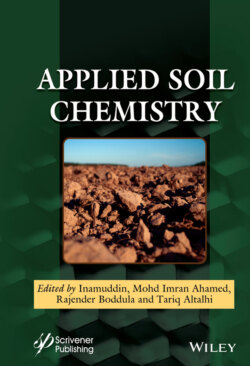Читать книгу Applied Soil Chemistry - Группа авторов - Страница 17
1.1.2 Organic Compounds Present in Soils
ОглавлениеOrganic organisms and compounds present in soils are diverse, and the provenance of some of the organic molecules, not present in organisms or identifiable fragments of organisms, is often uncertain. The type and quantity of organic material accumulating in soils is influenced by seasonal weather and biological life cycles. Decomposition processes tend to target the simple biochemical molecules initially; amino acids, nucleic acids, proteins, and sugars. Degradation of the more complex structured molecules, cellulose, hemicellulose, pectins, and polymers takes much longer. Lignins, present in the cell walls of wood and tree bark, takes the longest time to be broken down.
Most biomass consists of complex mixtures of the organic materials mentioned all decaying at different rates and forming physical and chemical mixtures. The presence of lignin in such complex mixtures tends to slow down the decomposition of the components that on their own would decay more rapidly. The degradations of mixtures of organic materials containing cutins and tannins can also be retarded in a similar manner.
Microbes constitute up to about 3% of the organic matter in soils. Bacteria and fungi have their own complex chemical makeups that distinguish them from plant and animal derived biomass. Melanins, derived from some fungi, are not degraded easily and are partly responsible for the dark coloration of some soils. Microbial actions tend to remove visual signs of the structures of organisms they decay turning the organic material into a biochemical soup revealing only their microbial provenance. Some non-biological synthesis of chemical bonds does occur in this biochemical soup, in the presence of oxygen and groundwater of varying acidity, contributing to the humification of soils. The humic materials generated to be stable and not susceptible to fragmentation by biologically produced enzymes [17]. During decomposition the carbon quantity of the organic materials in soils increases from about 40% (undecayed plant material) to about 60% (fully humified soil). Humified soil is not just organic material, it involves mixtures with various inorganic minerals from the weathered outcropping rocks on which it resides, particularly the finer grained clay minerals. The combination of decayed organic material with inorganic minerals, physically as grain coating and chemically as mineralization reactions, aids the structural integrity of soils and often helps to inhibit mechanical processes involved in soil erosion.
